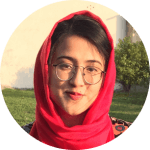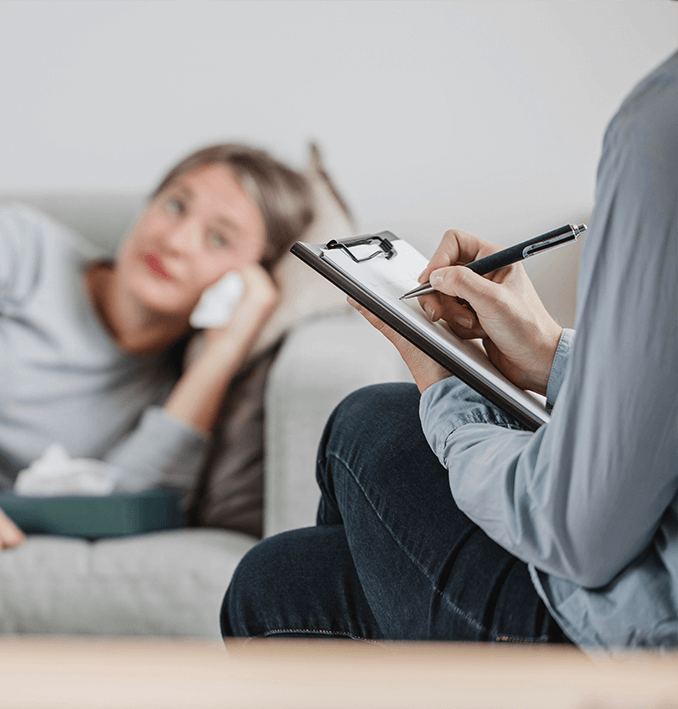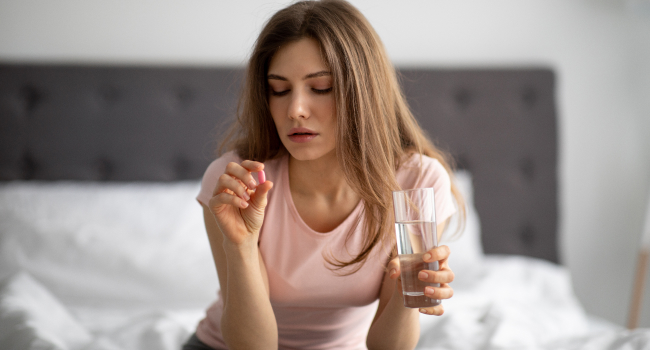Anxiety stands as one of the most prevalent mental health conditions affecting a significant portion of the population. It has a multitude of causes and takes different forms. One notable feature of anxiety disorders is their repetitive cycle that is often launched by avoidance and results in a relentless whirlwind of worry, fear, and stress.
Avoidance is a common response to situations that trigger anxiety, but while it might bring short-term relief, it doesn’t solve the underlying problems. On the contrary, it can worsen the symptoms or create new issues, which develops a never-ending loop. Read on to know how it happens step by step and what strategies can help break free from such a cycle.
Contact MEDvidi today to know what personalized strategies can help you overcome anxiety.
What Is the Cycle of Anxiety?
According to the DSM-5 (Diagnostic and Statistical Manual of Mental Disorders), anxiety is characterized by excessive and persistent fear or worry regarding future situations. It often comes with physical and psychological symptoms and a tendency to engage in avoidance behaviors.
The Four Stages of Anxiety
The cycle of anxiety typically comprises four stages. They are as follows:
- Stage 1: Anxiety in response to triggers. Stressful thoughts and situations cause excessive anxiety and bodily sensations, such as a racing heart, sweating, an upset stomach, rapid breathing, and muscle tension. All of this can create a profound sense of discomfort making them want to escape from what’s causing their anxiety.
- Stage 2: Avoidance behaviors. When people feel anxious or uncomfortable, they may resort to two main types of avoidance behaviors: emotional or physical avoidance. They may want to physically leave anxiety-inducing situations or suppress negative emotions and thoughts through denial, distraction, or using substances like alcohol to numb their feelings.
- Stage 3: Short-term relief. When individuals avoid situations because of anxiety, they initially experience relief from not having to face the challenge; however, this relief is short-lived.
- Stage 4: Heightened anxiety. As a person keeps avoiding things, they miss out on positive reinforcements and can notice worsened self-esteem and anxiety instead.
For example, a person with social anxiety can worry when being asked to give a speech in public. This offer triggers their anxiety symptoms, and they decline the opportunity. The fact that they don’t have to face so many people makes them feel relieved. But then, whenever a similar opportunity turns up, they feel anxious again because of not having associated positive experiences. With time, self-doubt and negative thinking can make social anxiety even worse.

How to Identify the Stage of an Anxiety Cycle
The vicious cycle of anxiety and avoidance can significantly affect your overall well-being. The first step to breaking this repetitive anxiety pattern is to determine the current stage within the cycle. The following steps can be helpful:
- Identify the specific triggers of your anxiety. They can be related to a person, an event, a memory, or something else. Reflect on your recent reactions to these triggers and how you responded when anxiety arose.
- Check your thoughts. Pay attention to your thought patterns and identify negative ones. Also, take note if you notice yourself actively avoiding specific thoughts or subjects, as this could be a sign of the second stage—emotional avoidance.
- Scan your bodily sensations. Pause and conduct a quick scan of your body for physical symptoms associated with anxiety. These include a racing heart, sweating, muscle tension, heavy breathing, or stomach discomfort. Physical symptoms can provide valuable clues about your anxiety level.
- Reflect on recent actions. Evaluate your response to the situations you encountered recently. Did any of them make you anxious? Did you feel relief from declining some offers repeatedly? If repetitive, these patterns and triggers can help you understand if you are dealing with the circles of anxiety.
How to Reverse the Four Stages
It is possible to reverse the tendency to avoid stressors in readiness to face them. Remember that doing something you tried to avoid may increase your anxiety at first. If it happens, scan your symptoms of anxiety, be it negative thoughts or physical sensations, and observe them without overthinking. Then, try relaxation techniques and monitor your response to stressors.
The more often you face your triggers, increasing exposure to them gradually, the easier it will become with time. As a result, you can obtain positive reinforcement, and your anxiety toward specific things or situations will reduce. Also, unlike avoidance strategies, your repetitive attempts to deal with your fears can boost your self-confidence and make you able to cope with the symptoms better.
10 Tips to Break the Anxiety Cycle
Breaking free from the cycle of anxiety can be difficult at first. To learn more about effective strategies, you can consult a healthcare provider. Some commonly recommended techniques include the following:
- Avoid constant self-checking. Monitoring your thoughts and anxiety symptoms too often can worsen the condition. Do it only when necessary to prevent the development of health anxiety.
- Challenge your worrying thoughts. Challenge your anxious thoughts by reframing your thinking. Assess if your thoughts are rational and true.
- Try gradual exposure. If avoidance behaviors are a significant part of your cycle of anxiety,
exposure therapy[2] can help you learn to face your fears. You will do it gradually in a controlled way being guided by a therapist, building resilience to anxiety triggers. - Practice self-compassion. Try to let go of perfectionism and embrace self-acceptance and self-care. Remember that anxiety is a real disorder, and it’s normal to seek help.
- Be prepared for stressful events in advance. Identify upcoming stressful situations or triggers and plan ahead. Having a structured approach can reduce anxiety when facing challenges.
- Prepare a list of healthy distractions. Make a list of activities that take your mind off anxiety such as painting, writing, reading, gardening, etc. These healthy distractions can shift your focus away from anxious thoughts.
- Maintain a healthy lifestyle. A healthy lifestyle that includes regular exercise, a balanced diet, sufficient sleep, and stress management can have a profound impact on your anxiety and overall well-being.
Evidence[3] suggests that regular physical activity can reduce anxiety by releasing endorphins, which are natural mood lifters. - Implement relaxation techniques. Managing the emotional and physical symptoms of anxiety is possible through
relaxation[4] techniques, including deep breathing exercises, progressive muscle relaxation, and mindfulness meditation. - Set realistic expectations. Be kind to yourself and recognize that perfection is not attainable. Set achievable goals and acknowledge your accomplishments, no matter how small they may seem.
- Educate your loved ones. Talk to close friends and family about your anxiety, explaining its effects and how they can support you. Open communication can enhance understanding and empathy, lessening feelings of isolation.
Finally, don’t hesitate to seek professional help if anxiety is impacting your life. Clinical interventions may involve psychotherapy and, if necessary, medication management, or a combination of both approaches.
Take a step toward a more peaceful and fulfilling life. Schedule a consultation with our experienced healthcare professionals today.
Conclusion
Understanding the cycle of anxiety and its impact on your well-being is the first step to regain control of your life. Anxiety is fueled by avoidance behaviors and negative thoughts, so it’s important to adopt healthy coping strategies and seek professional help if the symptoms and avoidance interfere with your daily life.
FAQ
How long can an anxiety cycle last?
The duration of an anxiety cycle can vary from person to person. It depends on the type of anxiety disorder, its severity, and treatment. Sometimes, it might only last for a few hours. But in other cases, such as chronic anxiety disorders, it can persist for weeks or even months. It is important to seek help promptly to address anxiety and prevent its impact on your daily life.
What causes an anxiety loop?
Anxiety loops result from a combination of factors, including avoidance behaviors, low self-esteem, and negative thinking patterns. To learn more about what could cause anxiety in your particular case and how to deal with it effectively, consider consulting a healthcare provider.
What is the severe anxiety cycle?
The severe anxiety cycle is when anxiety symptoms get worse with time. Heightened anxiety leads to physical and psychological symptoms like panic attacks and racing thoughts. This makes anxiety even stronger, creating a tough cycle. Severe anxiety cycles need professional intervention, including therapy and, in some cases, medication, to help individuals find relief.













